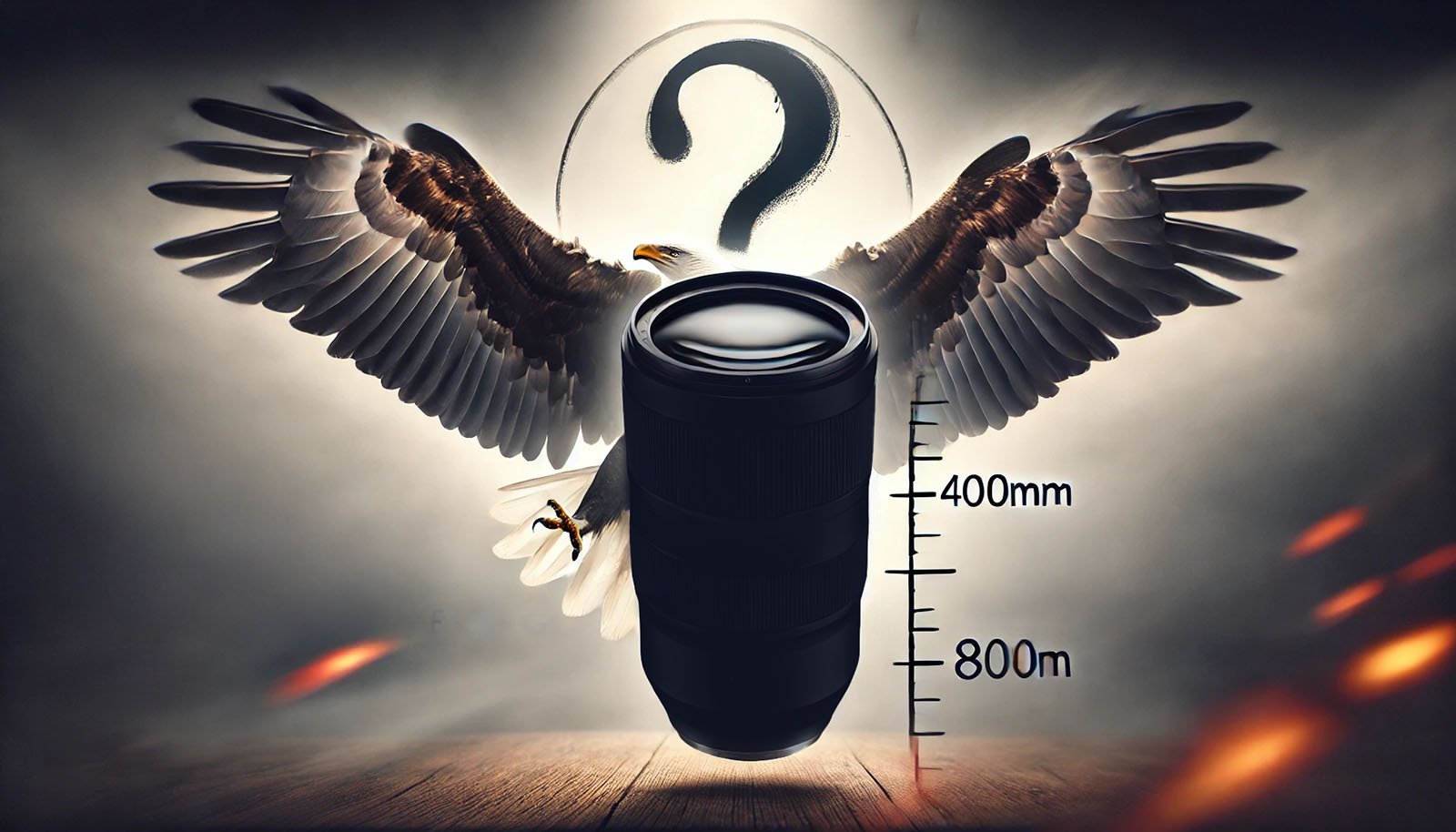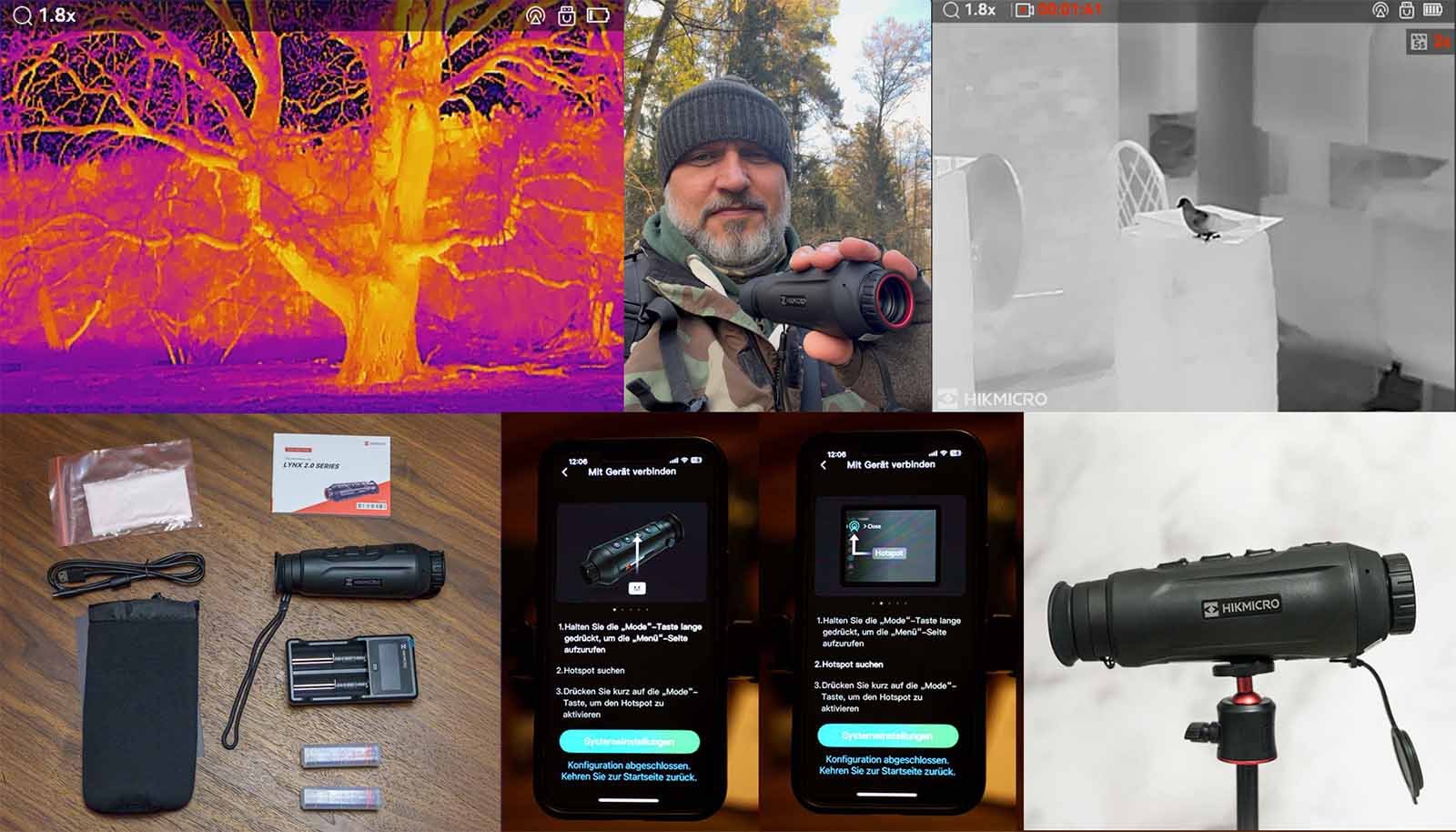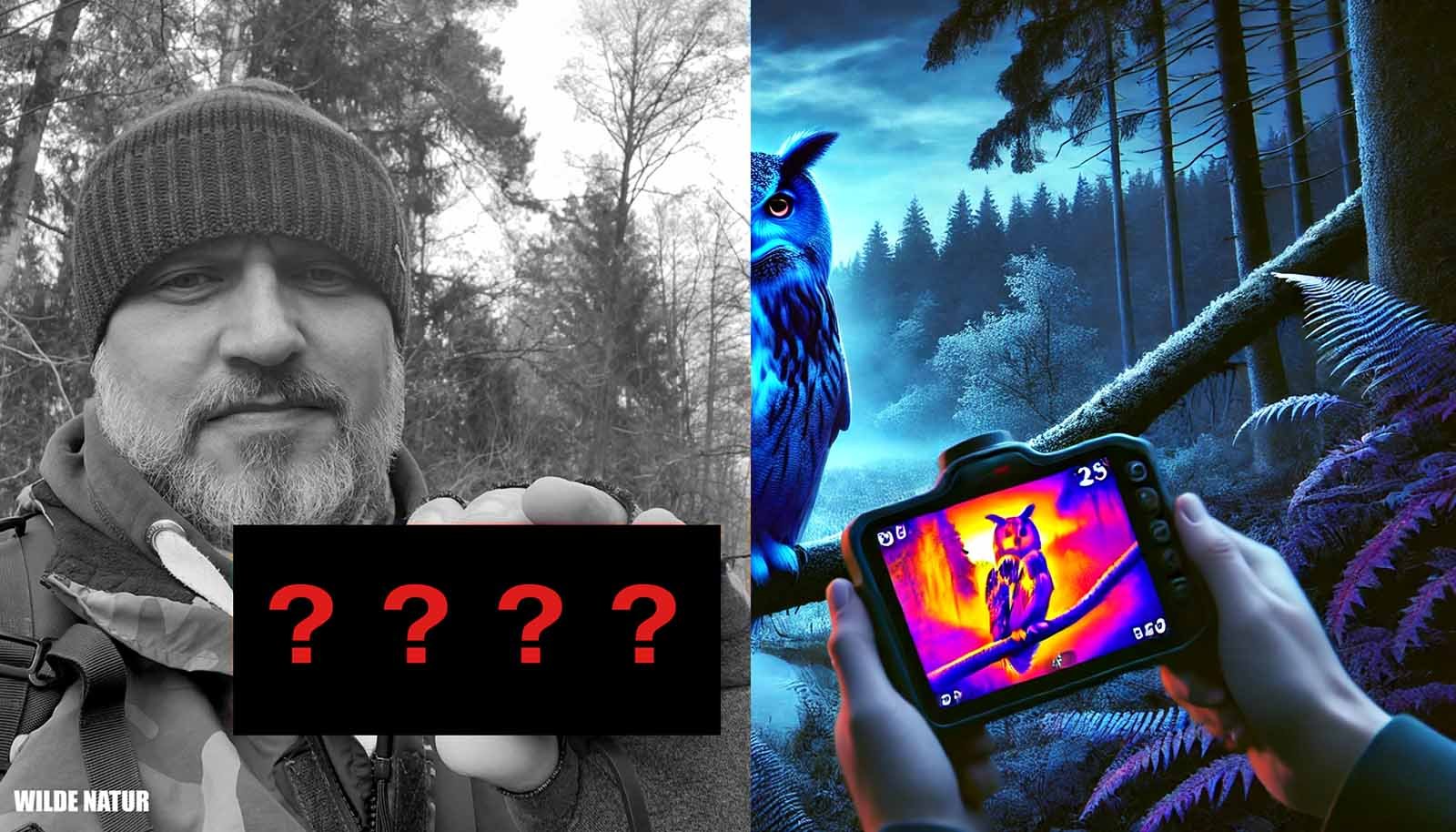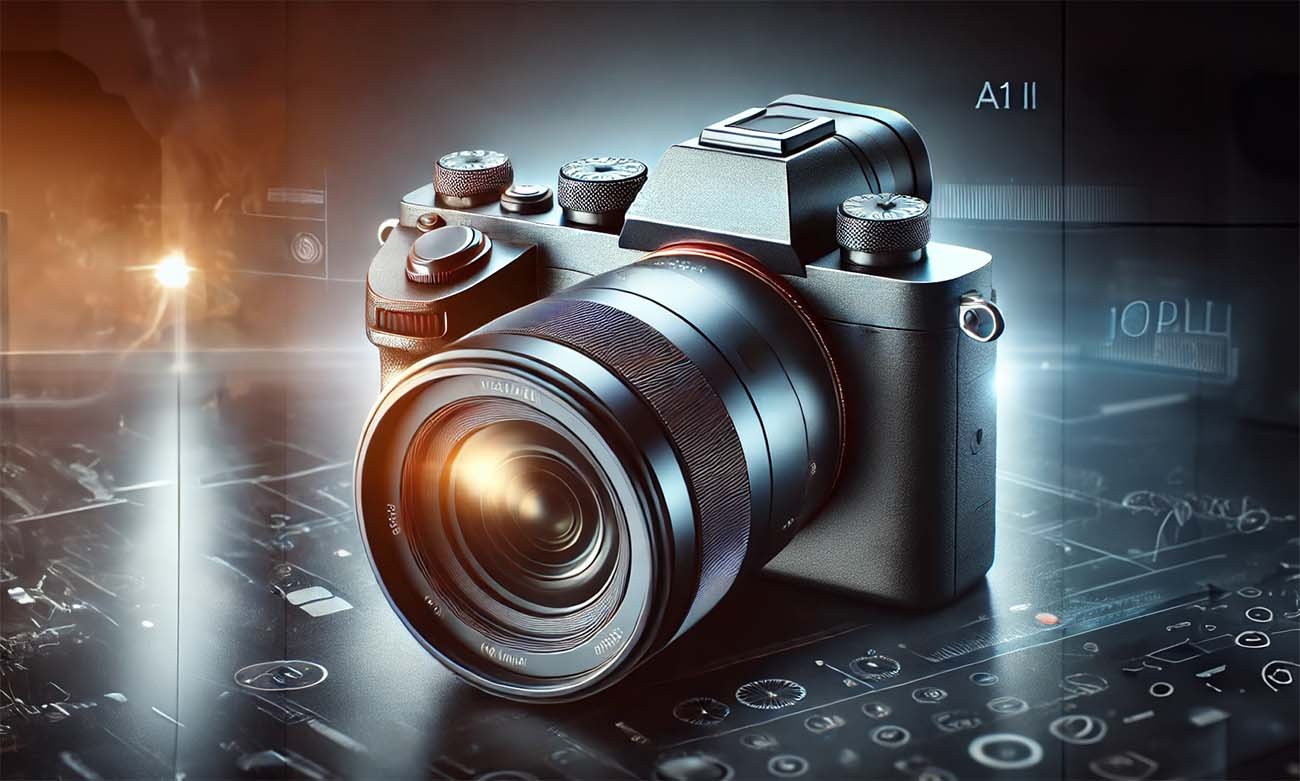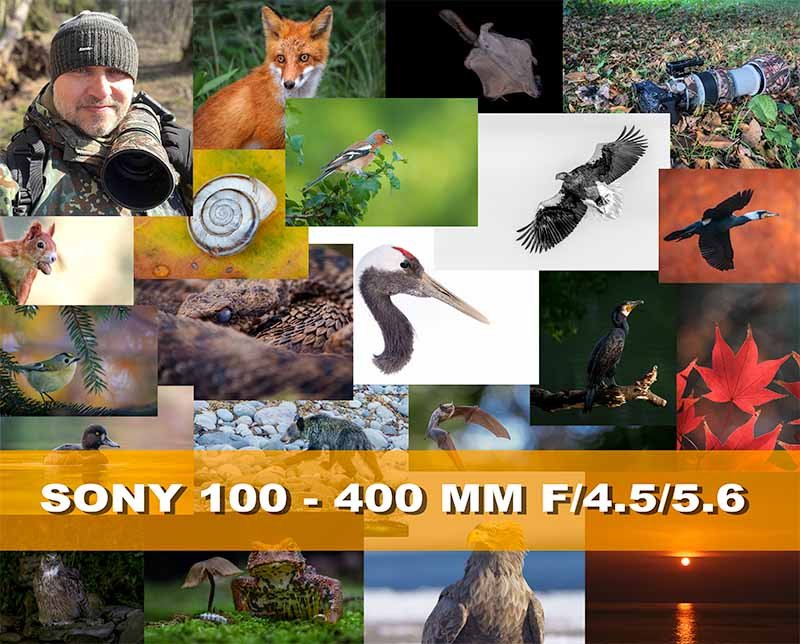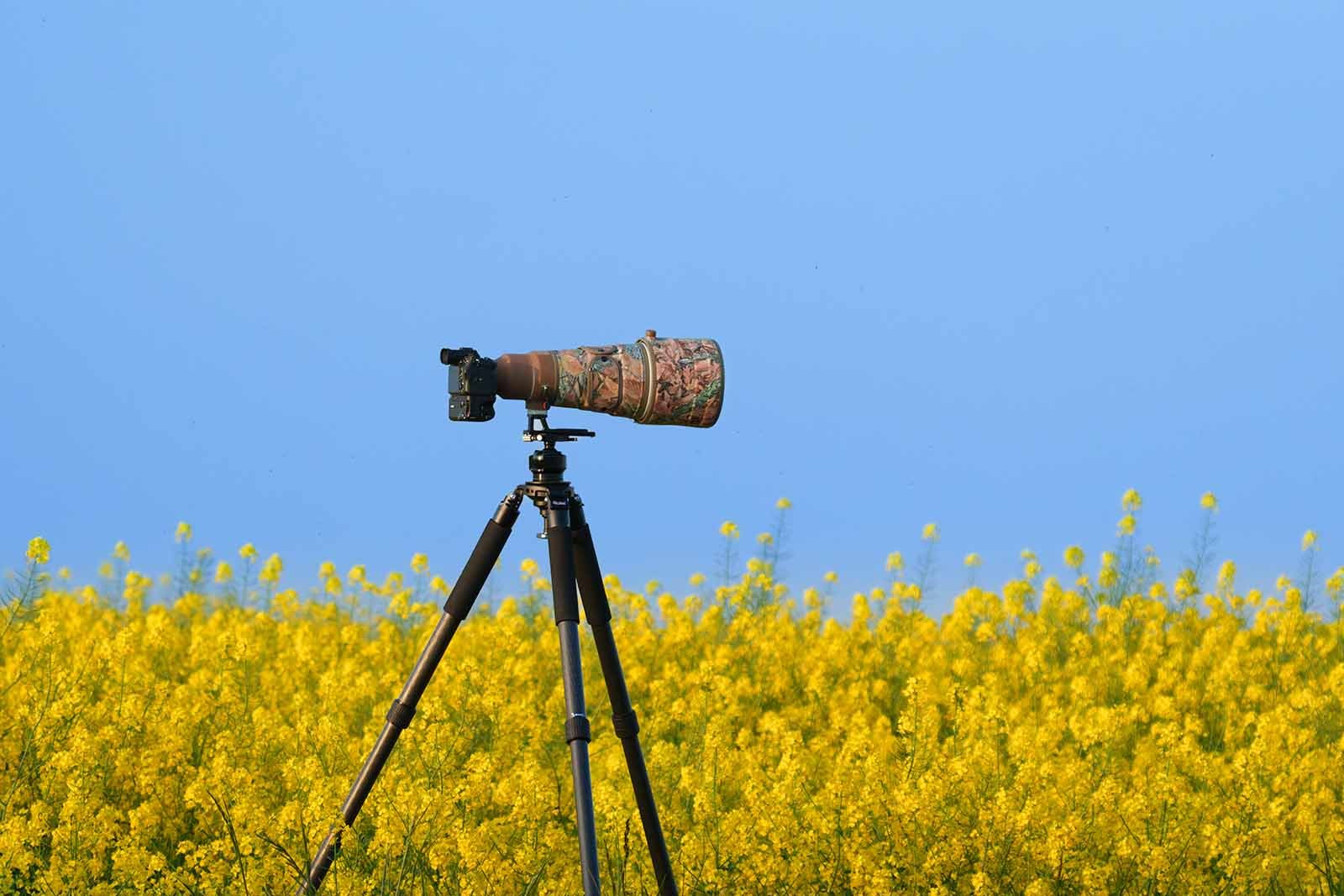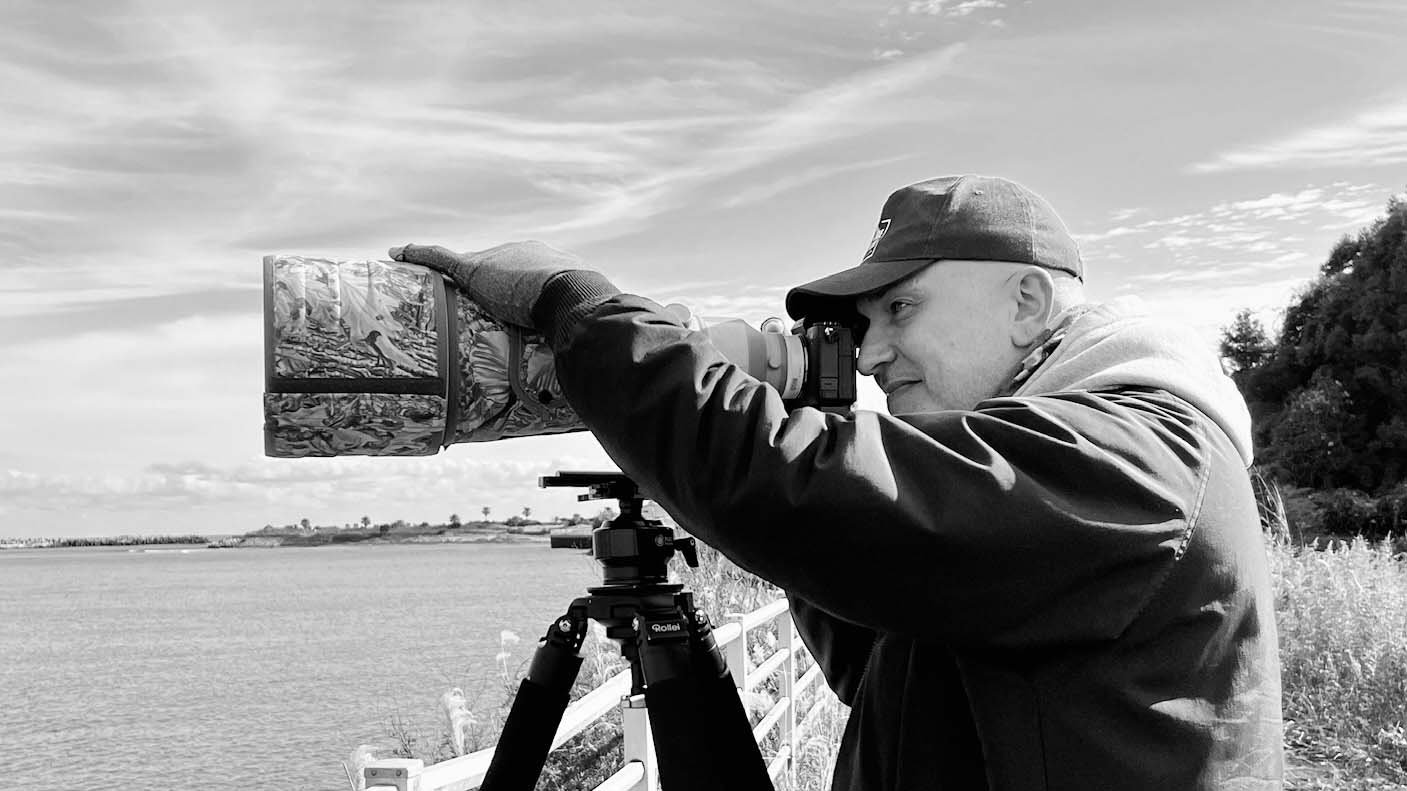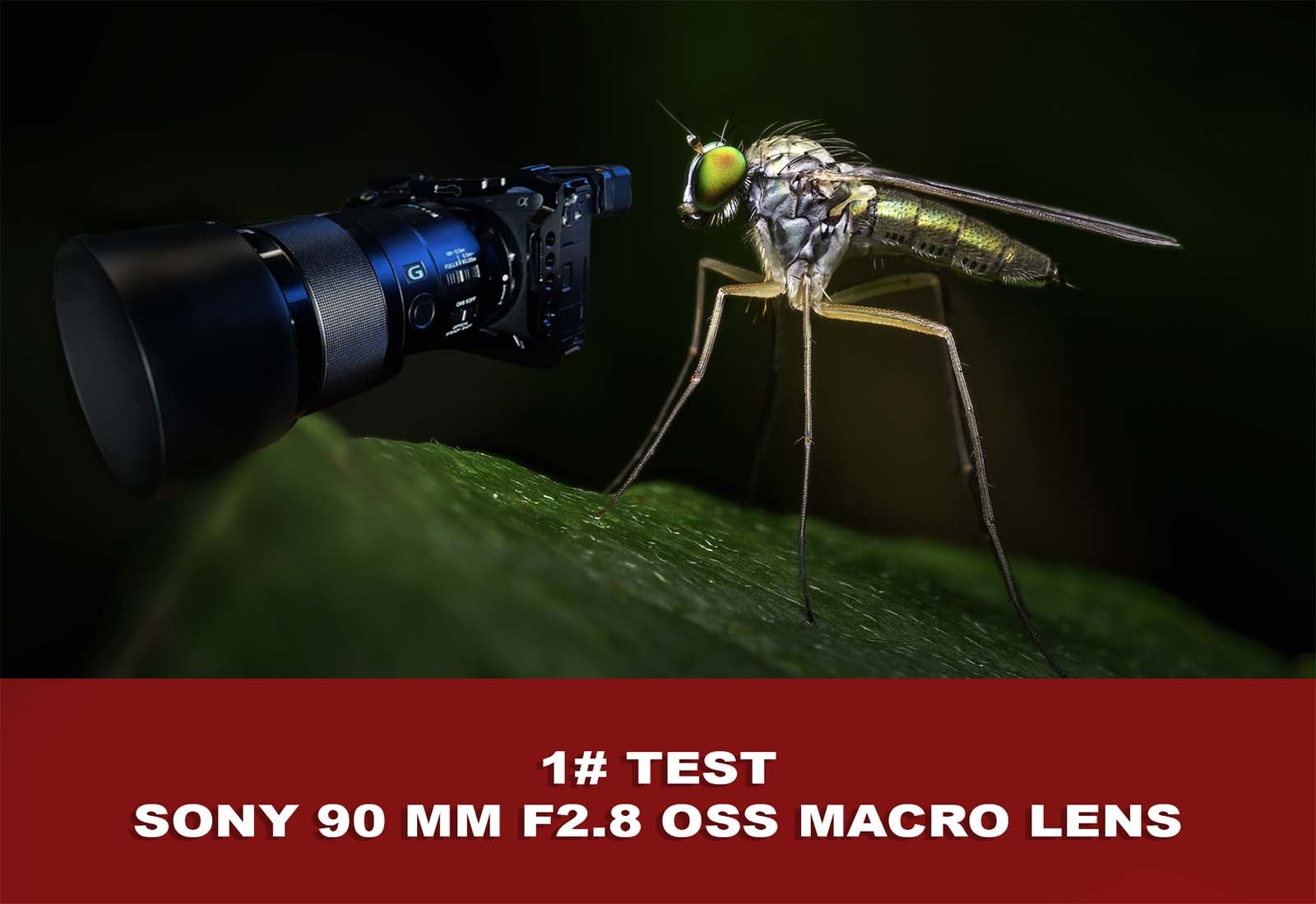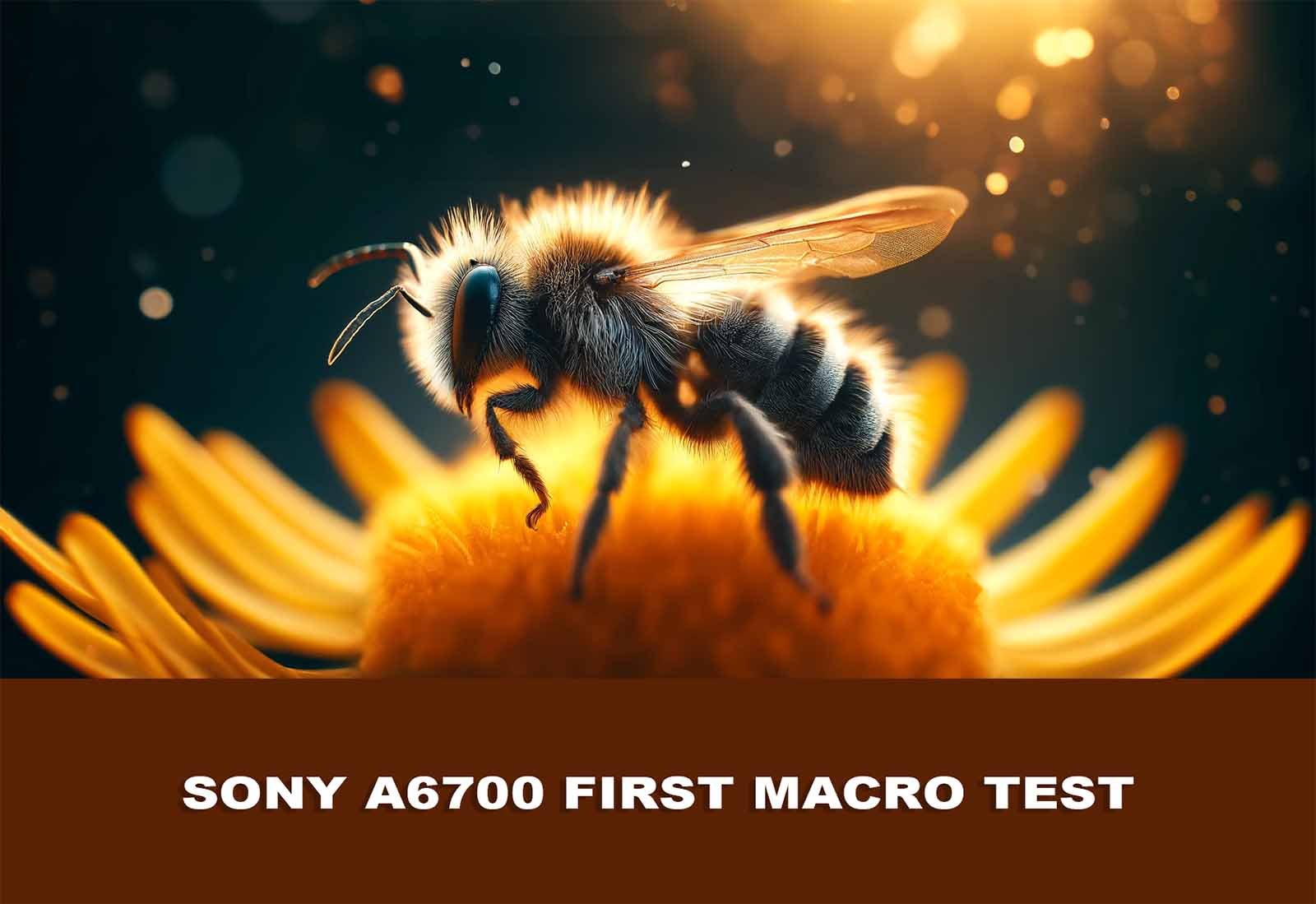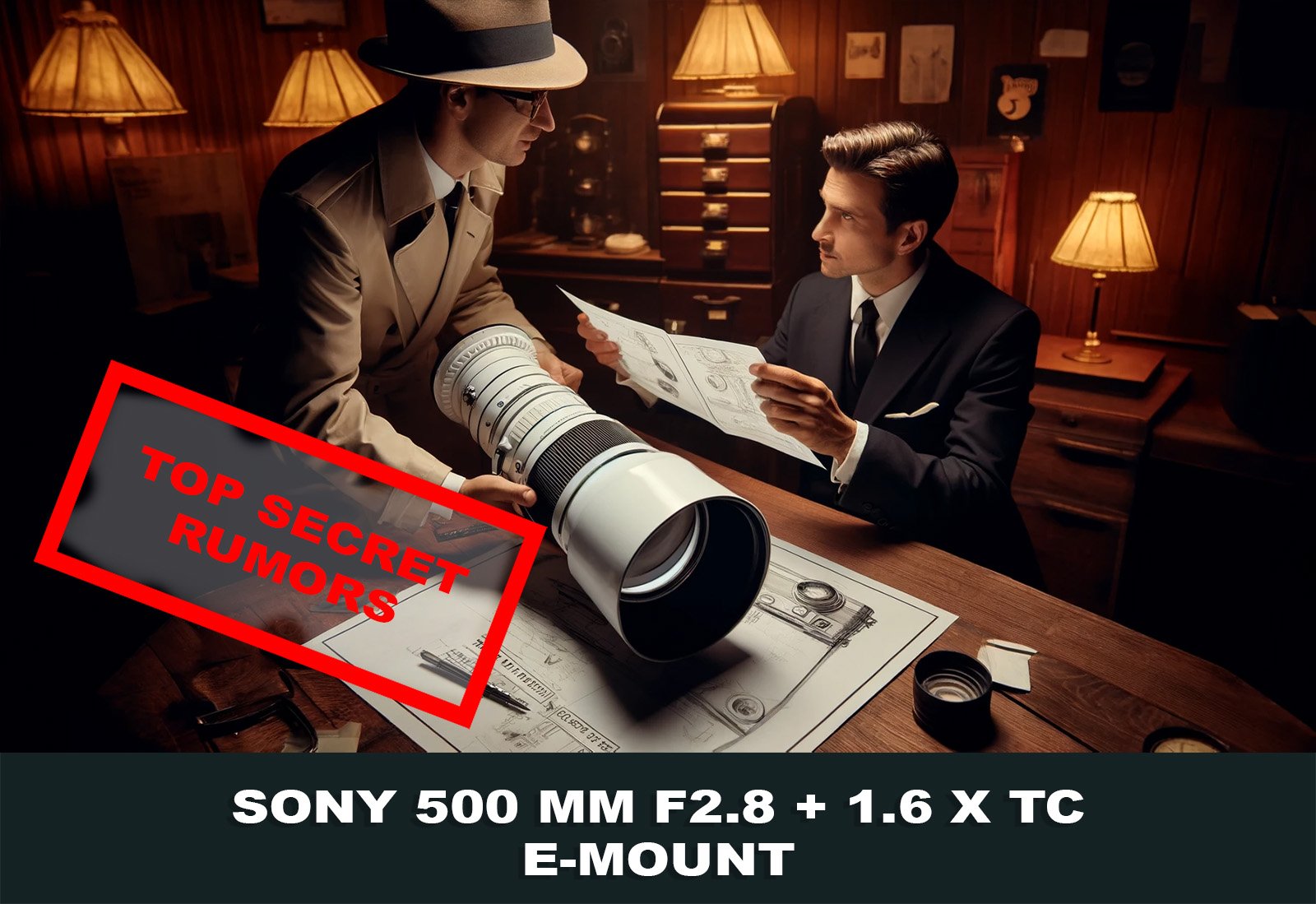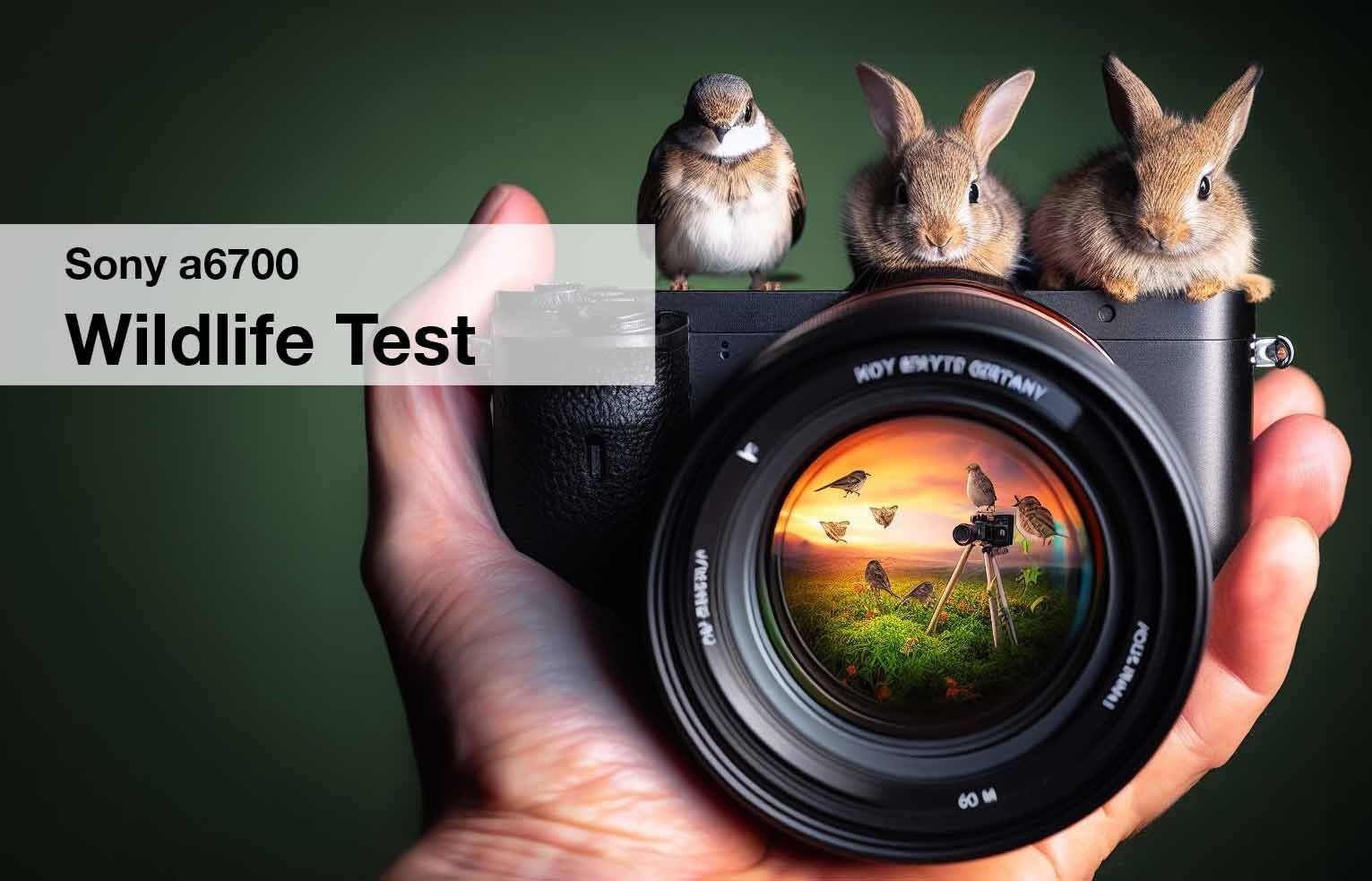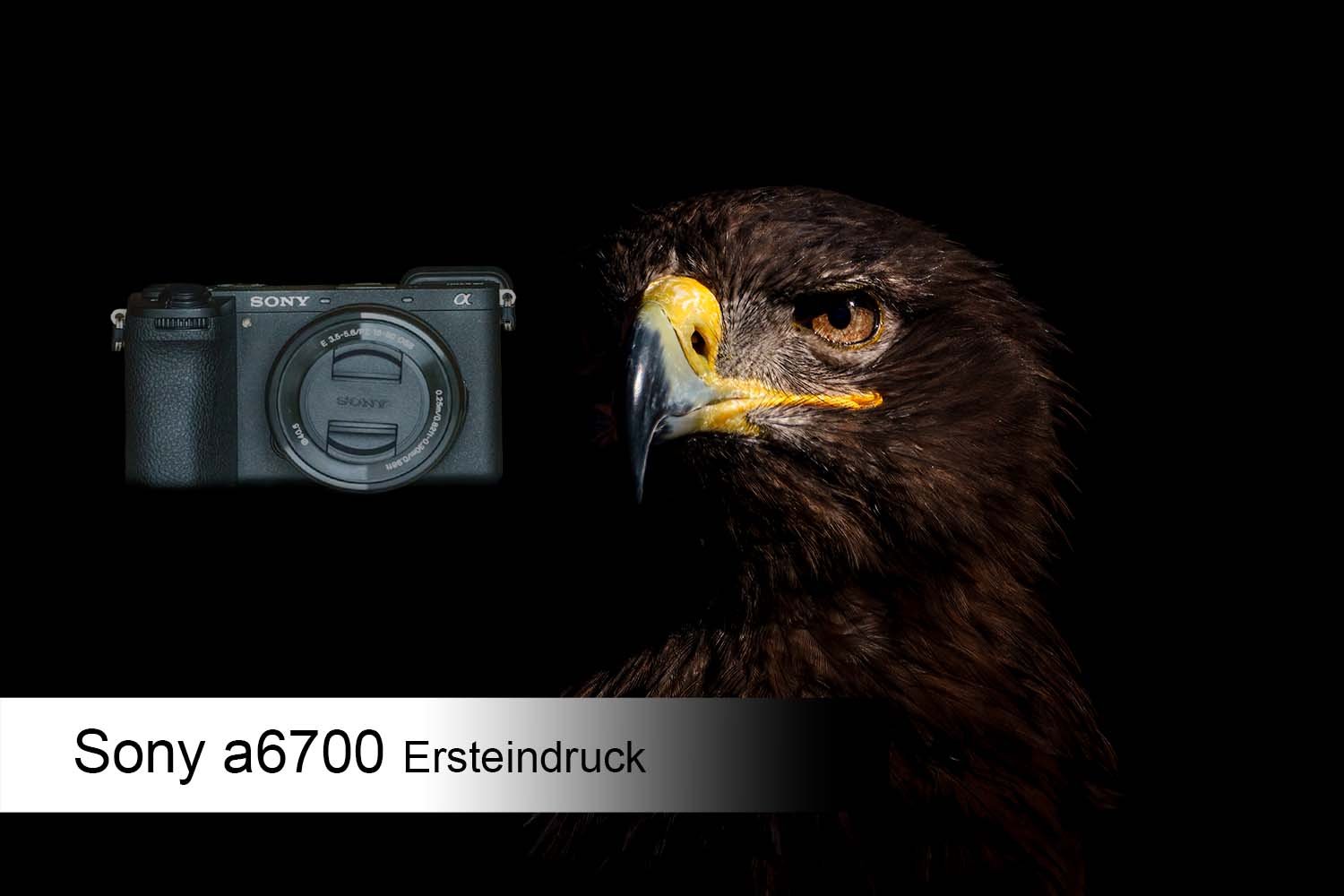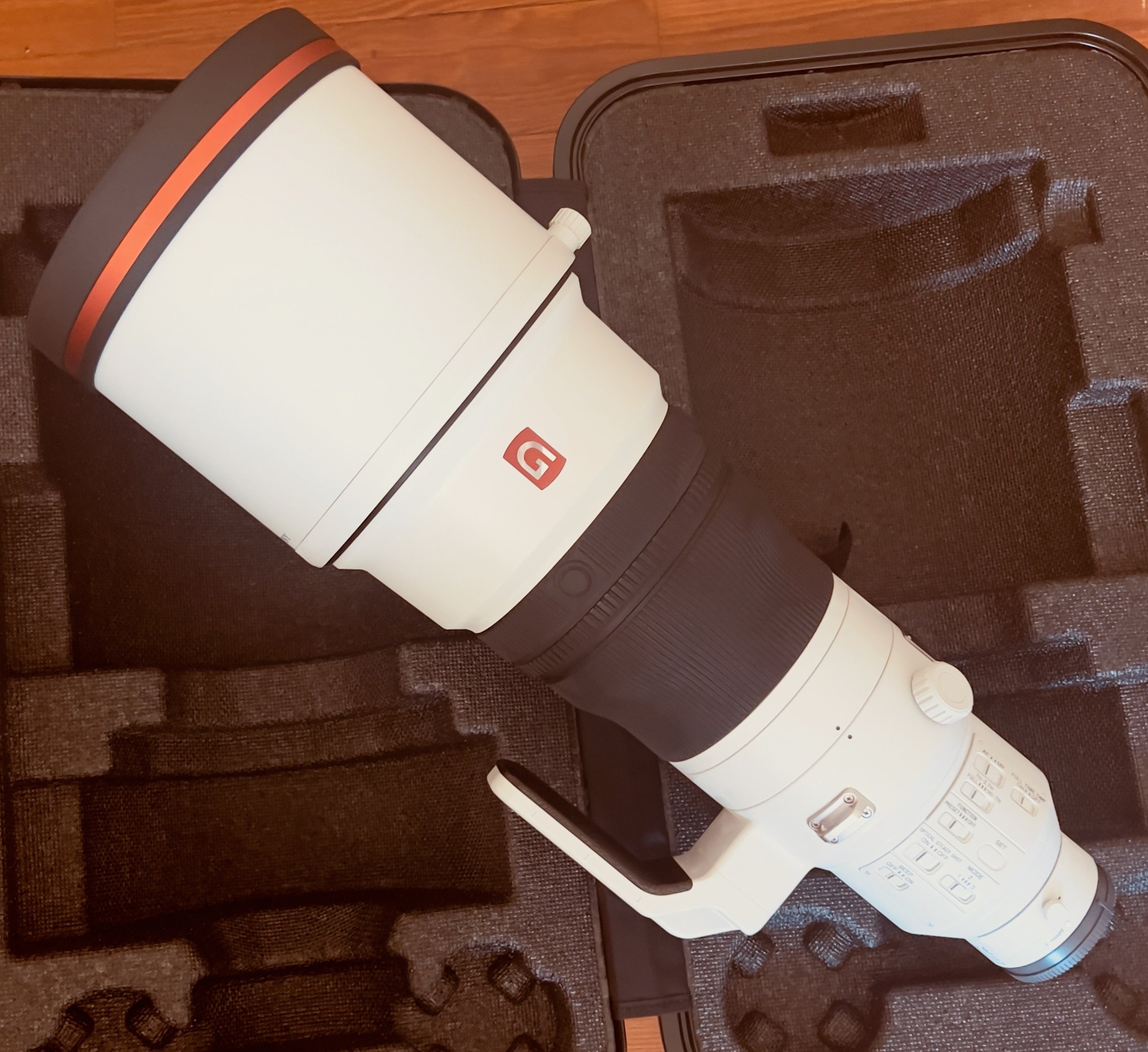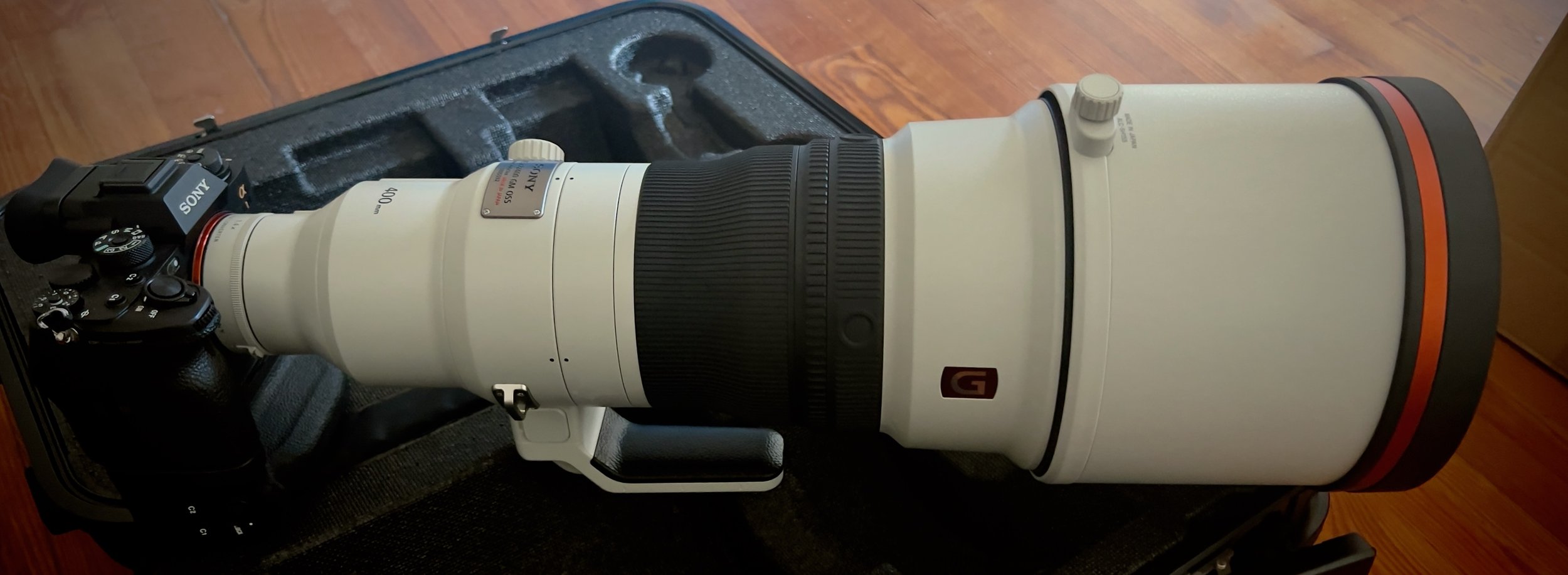Thermal imaging cameras and Wildlife photography?
Are Thermal Imaging Cameras Helpful in Wildlife Photography?
Can thermal imaging cameras open up a new world in wildlife photography?
Find out why I decided to get a thermal imaging camera and whether it actually offers any advantages.
Did I make the right decision?
Table of Contents
- Why a Thermal Imaging Camera?
- The Decisive Moment of My Decision
- My Expectations for the Thermal Imaging Camera
- Thermal Imaging Cameras – Only for Nighttime?
- My Research: The Path to My Thermal Imaging Camera
- From Chaos to Decision
- The Shortlist: Two Models in Focus
- Outlook: What’s Next?
Why a Thermal Imaging Camera for Wildlife Photography?
On my wildlife photography adventures—often in the early morning hours—I experience nature not only in daylight. Dawn and nighttime are especially exciting and offer fascinating moments. In those early hours, when human eyes can barely see, you can hear nature all around: the crackling in the forest, birds chirping, a distant rustling in the undergrowth. And that’s where the thermal imaging camera comes in: It makes a world visible to us that normally remains hidden.
The Decisive Moment
The spectacle of the red deer rut, largely hidden
For me, a key motivator to delve deeper into this topic was the deer rutting season last year. The deer in my region are extremely shy due to predators like wolves or humans. They leave the open wetland areas before sunrise and retreat into the protective forest. As a result, most of the rutting spectacle remained unseen. But I wanted more than just to hear it—I wanted to see this natural phenomenon. That’s why I first started looking into thermal imaging cameras.
My Expectations for the Thermal Imaging Camera
At the moment, this is still purely theoretical for me—I have no hands-on experience with a thermal imaging camera yet. Still, I have a clear idea of how it could support me:
- Nature Project Planning: Better overview of the variety of species in a specific area
- New Nature Experience: Observe animals that usually remain hidden
- Wildlife Photography: More easily find hidden subjects
A Thermal Imaging Camera Is Only for Nighttime—Right?
Many people think thermal imaging cameras only work in the dark. That’s what I thought at first too, but it’s a misconception.
The British wildlife photographer & YouTuber Mike Lane showed in one of his videos that these cameras can also be used during the day. That made me even more curious.
Of course, I assume there are certain limitations, such as:
- Strong sunlight may make temperature differences less noticeable.
- In summer, the ambient temperature can match many animals’ body temperatures, making them harder to detect.
But: In low light or in the forest, a thermal imaging camera works accurately—according to my research!
My Research: The Path to My Thermal Imaging Camera
I had lots of questions but no answers, so I started scouring the internet and especially YouTube. I wanted to find out:
- Does the camera also detect songbirds?
Thermal imaging cameras are primarily used by hunters—or so I’d assume. Larger animals like deer, roe deer, or wild boars naturally give off more heat, so they’re easier to detect. But what about small songbirds? Their body surface is much smaller—does it radiate enough heat to be visible? - From what price point and quality level are my expectations met?
I wondered which price range could offer good image quality without breaking my budget. - How do I correctly interpret the thermal imaging camera specs?
The data sheets and technical specifications differ greatly from those of regular cameras. Which values are really crucial for understanding actual performance? - Which focal length do I need?
There are no interchangeable lenses here—except on some high-end models—so you should know which focal length suits you best before buying. Also, the focal length is not directly comparable to that of a mirrorless or DSLR camera. - Which features are important?
Are there major differences in features among manufacturers? If so, which ones match my expectations? - Which thermal imaging camera best supports wildlife photography?
- Is a thermal imaging camera really the right choice for my projects?
- What experiences are already out there in wildlife photography?
My Introduction to the Technology
I started with a brief technical overview on the Zeiss website and learned some basics:
- NETD Value: Indicates how sensitive the camera is to temperature differences.
- Pixel Pitch: Defines the distance between pixels, measured from the center of each pixel.
- Field of View (FoV) & Range: The field of view—the size of the visible angle you can observe at 100 m with the device.
- Focal Length: Be careful here, because there’s something similar to a “crop sensor effect.” The sensor has a smaller image area.
Just as an example for illustration: A 19 mm focal length on a thermal camera (small sensor & e.g., 1.8x magnification as a base) can provide a field of view equivalent to approximately 150 mm on a full-frame camera.
After about two hours of reading, I had a rough grasp of the technical basics—but what about actual hands-on experiences with these thermal imaging cameras?
From Chaos to Decision
I looked for practical experiences with thermal imaging cameras on various platforms:
- Articles and Tests on different websites
- YouTube videos to see the devices in action
But I soon noticed:
Most of the German-language content was made by hunters for hunters. For my purposes—wildlife photography and nature observation—I found hardly any German-language info that answered my questions.
So I switched to English-language sources.
Once again, Mike Lane was particularly helpful. He found that his thermal imaging camera produced great images but was designed for long distances. That made nearby searches more difficult—he had to systematically scan his immediate surroundings in quadrants. It’s comparable to trying to scan a row of trees 10 meters away with a 600 mm lens. Since most of his wildlife photography is at close range—mine too—this was a crucial clue for me.
I also found a few videos from birders, wildlife photographers, and retailers demonstrating various models in practical use. This gave me some answers to my questions—though not all of them were completely satisfying.
Does the camera also detect songbirds?
Yes, but as always, many factors come into play, such as distance, focal length, NETD value, etc., so there is no black-and-white answer.
I also couldn't determine exactly how it behaves under different weather conditions—for example, in summer, when the air is also warm.
Of course, camera quality is also a crucial factor: Entry-level models perform differently than high-end devices.
From what price point and quality level are my expectations met?
I took the entry-level model from Zeiss as a baseline:
- Zeiss DTI 1/19 – Price: about €1,000
- Advantages: Lightweight, compact, 19 mm focal length, a bit wider angle than many other models
Another frequently mentioned model was the Hikmicro Lynx LH25 2.0, highly praised by hunters. Since hunters probably have the most experience here, I trusted their expertise.
However, the 25 mm focal length was too telephoto-heavy for me. Then I discovered the Lynx LH19 2.0, which offered a better balance of wide angle and reach for my needs.
Hikmicro Lynx LH19 2.0
- Hikmicro Lynx LH19 2.0 – Price: about €1,139
- Advantage: Wider field of view (19 mm) compared to the 25 mm model, slightly better specs than the Zeiss DTI 1/19, and a well-rounded overall package.
How do I correctly interpret the thermal imaging camera specs?
This topic really deserves its own article.
However, it’s important to know that, for example, the NETD value plays a key role. The lower the NETD value, the more sensitive the camera is to temperature differences.
Other important factors:
- NETD value
- Pixel pitch
- Type and resolution of the display
- Focal length
- Live-stream function (e.g., can it live-stream to a smartphone?)
- Battery type (built-in or replaceable)
- Storage for photos and videos
- Zoom function
- Manual focus
- Operating temperature range max. -/+ C°
- Battery life
- Overall weight
- Tripod mount
- Good usability
Which focal length do I need?
Thanks to Mike Lane, I got the crucial hint that a wide-angle thermal imaging device is better for me.
Ultimately, everyone has to decide for themselves what suits their requirements best. I went with 19 mm because it seemed like a good balance for use in the forest and in open areas up to about 900 m. Whether I was right about this will become clear once I gain my own experience.
Which features were important to me?
Most thermal imaging cameras share similar core functions. Still, some points were crucial for me:
- Different Thermal Display Modes: Black Hot, White Hot, Red Hot, Fusion
- Manual Focus: Cheaper models often have a fixed focus
- Live Streaming: Easy to open a live-stream or transfer the image to another device
- Tripod Mount: The option to mount the camera on a tripod
- Power Supply: Replaceable battery or external power via power bank
- Ease of Use: Quick switching between modes, photo, and video capture
Which thermal imaging camera best supports wildlife photography?
A clear answer was difficult because the budget was a crucial factor. I had set a limit of 1,000 euros, which meant that only entry-level models were an option – making the decision a bit more complicated.
What I discovered for myself:
- A wider angle is an advantage.
- The sensor should have a good NETD value—especially important for smaller animals like songbirds.
- Lightweight & easy to handle: I’ll usually carry it in addition to my telephoto gear.
Is a thermal imaging camera really the right choice for my plans?
- Theoretically and based on my research: I could answer that for myself with a “Yes!”
What experiences already exist?
Opinions varied widely:
Some had tested a borrowed thermal imaging camera without a clear purpose—and their reactions were mixed (“useful, but not absolutely necessary”).
Others had deliberately purchased a thermal imaging camera and were mostly satisfied.
Birders were particularly enthusiastic—though I noticed many of them used high-end devices priced between €2,500 and €4,000.
I found the comparisons between different Zeiss models especially interesting:
High-end cameras could still show details at over 2 km—impressive, but also somewhat concerning when you consider that such technology could be misused.
Where were the most user reviews found on the internet??
I found most of the helpful user reviews in English-language content.
In German-speaking circles, the topic of wildlife photography with thermal imaging cameras was barely covered. If at all, they were mostly used for nighttime animal observation—to benefit from those insights the next day.
A particularly interesting video in this context was by Nico Sonnabend.
The Shortlist: Two Models in Focus
After extensive research, I narrowed it down to two models I already mentioned:
- Zeiss DTI 1/19
- Hikmicro Lynx LH19 2.0
Both cameras met my criteria regarding budget and intended use. But in the end, the Lynx LH19 2.0 won out.
It offered the best overall package for me:
✔ More sensitive sensor (better NETD value < 20 mK)
✔ Lightweight
✔ Replaceable batteries
✔ Larger storage capacity
✔ Many extra features
Plus, the price was almost the same—and I found a good deal on it at www.waermebild24.com.
I also want to give another shout-out to www.waermebild24.com, because they present their products in videos on their shop, explain them, and even show footage from practical use. This way, you can get a better idea of what to expect from each product.
Detailed Comparison & Utility Analysis?
I created a detailed comparison for my decision—including a “utility analysis.” If you’re interested, let me know in the comments or send me an email at kontakt@wildenatur.com. If enough people are interested, I’ll publish that comparison in a separate article.
Outlook: What’s Next?
In this article series, I’ll share my first impressions of the Lynx LH19 2.0 thermal camera, including:
- Lynx LH19 2.0 Unboxing
- First test & initial experiences with the Lynx LH19 2.0
- Implementation of a larger project
- Does the thermal camera meet my expectations?
The order is placed – now the adventure begins.
Will the thermal camera meet my expectations?
Let’s find out together!




